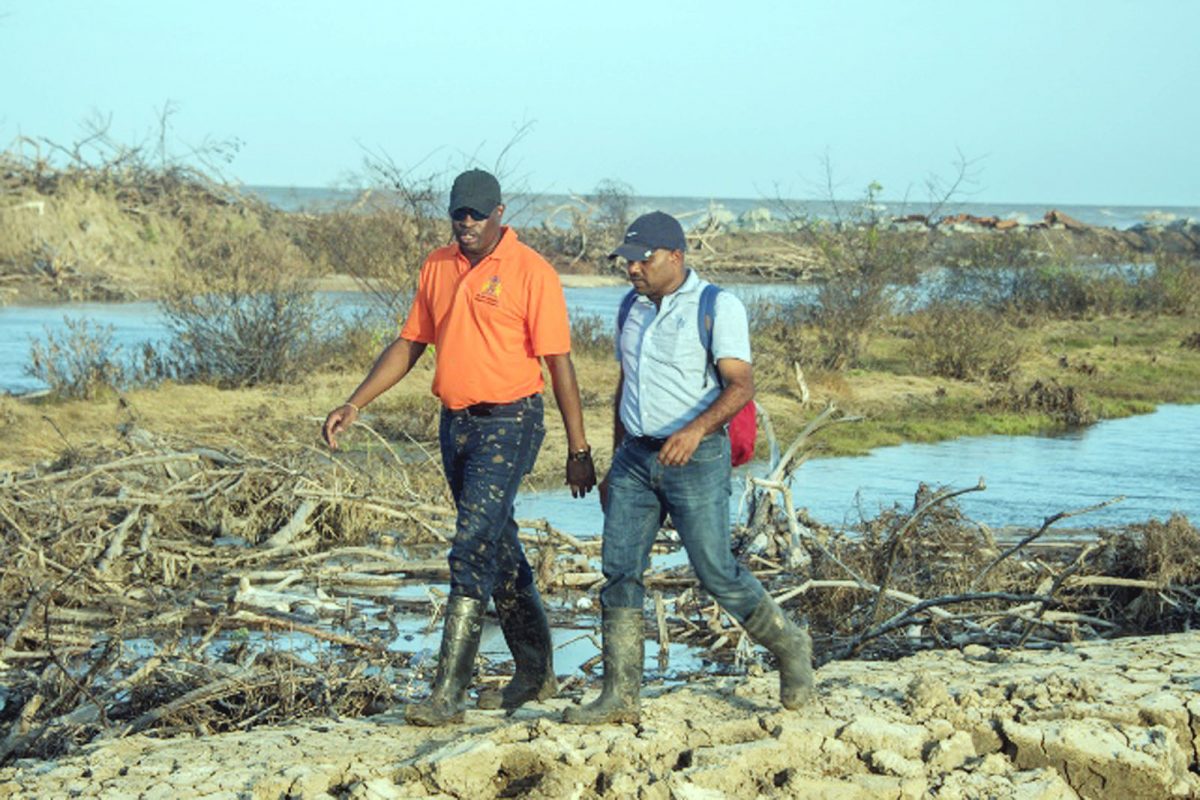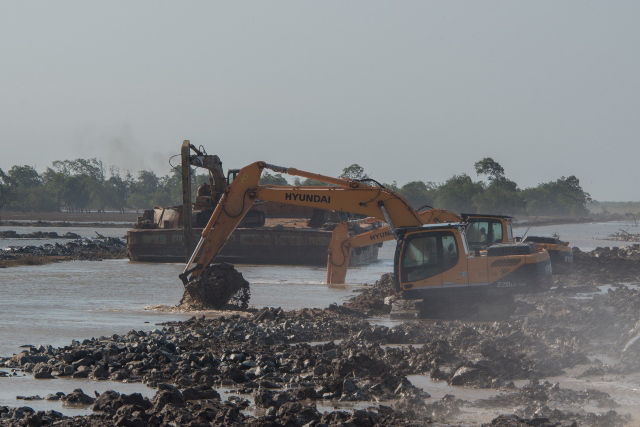The government is in a race to seal a decrepit section of the Mahaicony sea defence before spring tides return on October 26 and around 50,000 tonnes of boulders will be needed.
Spring tides last week surged through one section of the fragile defences where natural protection mangroves had been washed away and salt water has ruined large swathes of rice acreage.
The Department of Public Information (DPI) yesterday reported that Minister of Public Infrastructure, David Patterson disclosed that he has met with contractors concerning the breach of the Mahaicony’s earthen embankment caused by the recent spring tides.

“They are to provide me information by tomorrow [this] morning on what equipment they have, what stones they have available in their stockyards at the moment, and their opinion on what they see is the easiest and fastest way to get materials in here,” Patterson said.
The minister was at the time overseeing emergency works along Mahaicony foreshore. Among the persons he met were four stone suppliers and five contractors with the necessary equipment and the experience doing sea defence works.
Based on the current stage of the damage assessment to the foreshore, it is estimated that 50,000 tonnes of boulders are needed for emergency works along the impacted area between Dantzig and Fairfield, Mahaicony.
Patterson said that his ministry’s primary focus is to seal the breaches as the next spring tide is scheduled to occur in 23 days.

“The next spring tide is October 26, so we are maximizing the time. As long as there is no rain, we should be able to at least get to all the breaches and do some intervention. While we may not be able to stop the overtopping by the 26th, we want to stop the water coming in with free access,” Patterson added.
DPI said that one of the breaches is currently inaccessible. To address this situation, numerous excavators are extracting mud from the Bellamy Canal to build a wall behind the existing boulders along the foreshore. This is needed to enable the passage of equipment and materials to the sites that were breached, DPI said.
Within the affected zone, two pumps are being installed to drain water from the Bellamy Canal which runs parallel to the earthen embankment and the Atlantic Ocean. One was expected to be in operation by the end of yesterday, while the other will be on-site and working today, with more to follow in coming days.
Patterson also met with residents in Mahaicony to reassure them that all of the government’s resources are being directed to ensure the breach is sealed.
DPI said that it is estimated that 400 households across 65 coastal communities have been affected by the sea defence breach caused by spring tide during September 26 to October 2.
During Stabroek News’ visit to the area on Wednesday, one farmer, Neil Machado, who resides and has farmlands at Dantzig, Mahaicony, said that in total, the flooding caused him to lose just over 600 bags of paddy which were expected to be reaped sometime this month. “Nobody wanna bring their machine into the saltwater before it damage up the combine and so,” Machado said, while noting that the water has been on the land since Sunday. At the time of Stabroek News’ visit, a pump was in operation, pumping water from sections of the land into a nearby canal.
The farmer added that following the overtopping, not much attention is being given to the small farmers whose lives and livelihoods will now be affected in the long term.
He further stated that he, along with other farmers, are now worried as to what their next move will be as it was expected that the now lost crop, when reaped would have brought in revenue to repay debts. Their losses will result in more debt and it would be about four years until the lands can be used for planting again as the seawater will result in the soil being very salty, Machado told Stabroek News.
When asked, he said that he is not sure what his next plan would be. He indicated that the only thing that he may be able to do for now would be to sell some of his livestock to bring in revenue and help to pay some of the debts he owes.






